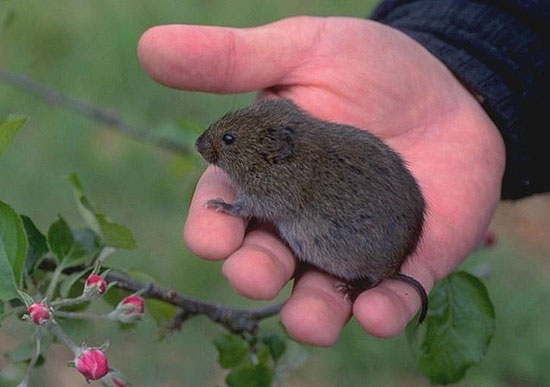Relied On Vole Control in Utah: Solutions for Your Property
Relied On Vole Control in Utah: Solutions for Your Property
Blog Article
Comprehensive Guide to Effective Vole Pest Control: Invasion Identification and Therapy Techniques
In the world of efficient pest control, vole infestations present an unique difficulty that demands a tactical technique. These tiny rodents, commonly incorrect for mice, can ruin gardens, grass, and plants if left unattended. Identifying the indications of vole existence and executing targeted therapy techniques are vital parts of a successful pest management plan. By discovering the nuances of vole actions, recognizing essential signs of problem, and evaluating a series of control choices, one can create a detailed strategy to fight these evasive insects.
Recognizing Vole Actions
Vole actions is defined by their burrowing practices and fast reproduction rates, making them a difficult bug to regulate successfully. These tiny rodents commonly develop elaborate tunnel systems underground, using them for sanctuary, food storage space, and transportation. Voles are herbivores, consuming a range of plants, turfs, light bulbs, and roots, which can create significant damages to yards, orchards, and lawns. Their rapid reproductive rate further complicates control initiatives, with females efficient in generating several clutters in a solitary year, each consisting of several children.
Recognizing vole habits is vital for reliable parasite control methods. By determining their burrow locations, keeping an eye on feeding areas, and applying targeted control techniques, such as trapping or habitat modification, vole infestations can be taken care of successfully.
Indicators of Vole Infestation

Avoidance Methods
Executing efficient prevention approaches is critical in reducing vole invasions and protecting greenery from their damaging feeding practices. To protect against vole problems, it is essential to start by getting rid of prospective food resources and shelter.
Consistently examining the home for indicators of vole task, such as paths and delve openings, is important for very early detection and prompt action. If vole task is believed, take into consideration using repellents or catches strategically put near their paths. Utilizing natural killers like snakes or owls can also aid maintain vole populaces in check. By carrying out a combination of these avoidance homeowners, garden enthusiasts and methods can efficiently shield their plants from vole damages.
Non-Lethal Control Methods
To properly take care of vole populations while focusing on humane approaches, non-lethal helpful hints control methods offer functional options for reducing vole damages in yards and landscapes. These barriers can be hidden at the very least 12 inches curved and deep at a 90-degree angle to stop voles from burrowing below.

Lethal Control Options
One efficient technique for attending to vole problems in landscapes and yards includes the calculated use of lethal control options. When faced with a severe vole infestation that non-lethal methods have failed to include, executing dangerous control actions ends up being vital. Generally, when using dangerous control options, it is vital to do so properly and in accordance with neighborhood regulations to effectively manage vole infestations.
Verdict
To conclude, reliable vole parasite control needs a comprehensive understanding of vole habits, recognition of indicators of infestation, execution of prevention approaches, and utilization of both lethal and non-lethal control methods. By integrating these strategies, individuals can efficiently handle vole populations and safeguard their home from damage. It is essential to address vole invasions without delay to protect against more problems and decrease the effect on the surrounding atmosphere.
Given the elaborate passage systems and quick reproduction prices characteristic of voles, identifying the see this page indicators of vole problem becomes necessary in efficient pest control. One of the main indicators of vole presence is the existence of surface paths or trails in lawn or snow, commonly about 1-2 inches broad, produced as voles take a trip in between their burrows and food resources.To efficiently take care of vole populaces while prioritizing gentle approaches, non-lethal control methods offer practical remedies for lowering vole damage in yards and landscapes.One effective technique for addressing vole infestations in landscapes and yards includes the strategic usage of deadly control alternatives. vole lawn damage.In final thought, efficient vole pest control needs an extensive understanding of vole actions, recognition of signs of invasion, application of prevention approaches, and use of both non-lethal and deadly control methods
Report this page